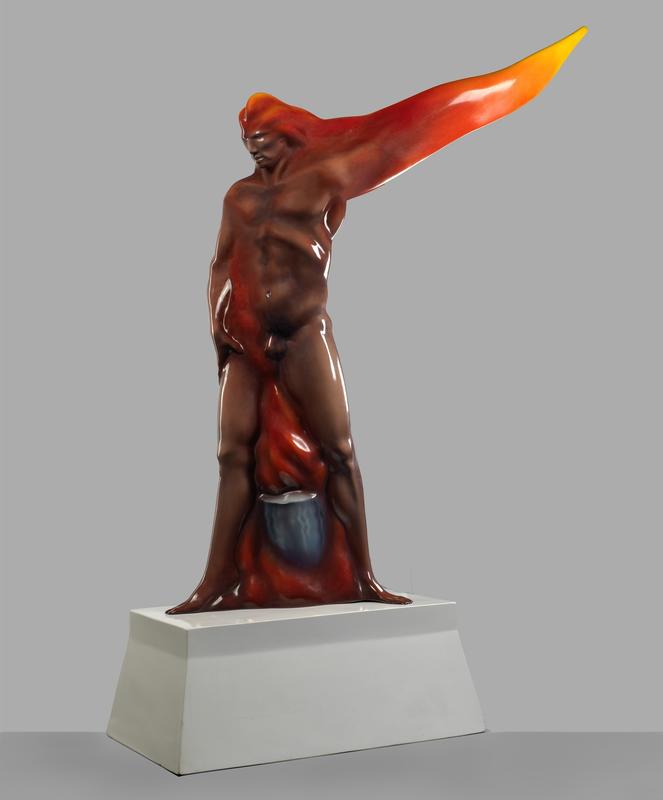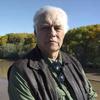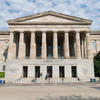More about Man on Fire

Sr. Contributor
When looking at the art created by Luis Jiménez, in particular his bright and colorful sculptures, you might not immediately think of lowriders or other custom cars, advertising signs and sculptures, or flashy Las Vegas neon.
Then again, maybe you would, as Jimenez got his start working in his father’s sign shop, Electric & Neon, in El Paso, Texas. One such sculpture made by the shop still stands today at the Bronco Swap Meet (formerly the Bronco Drive-In), a large horse head that Jiménez likely helped his father, Luis Jiménez Sr., create in the 1950s.
Jiménez’s favorite material to work with is fiberglass, which is not a very commonly used medium for art. He was initially drawn to fiberglass in his art because it’s “a blue-collar process.” As a teenager, his first experience working with the material was using it to repair a 1953 Studebaker that had been in a crash, and he started using it to make sculptures around 1963. Jiménez liked the extremely smooth surface of fiberglass and the shiny “plastic look” his sculptures took on after finishing them with several coats of aircraft acrylic urethane and clear coats. This polished, commercial aesthetic was kind of appalling to the art establishment of the day; Jiménez said it was “the finish that critics love to hate”.
Man on Fire has a LOT of different layers and influences. Jiménez created it in 1969, but it looks like it could have been made much more recently, mainly due to the use of fiberglass. At first glance, it’s like, okay, a naked guy who’s partly made of fire, cool. Yet the sculpture is much more than what first meets the eye; it starts with Jimenez drawing on a mash-up of the mechanical and the human, a theme he first explored in American Dream, where a car is “mating” with a woman, and which Jiménez views as a modern take of the classical mythology of Leda and the Swan, or Europa and the Bull.
He was also influenced by the work of Jose Clemente Orozco, a Mexican painter, whose mural Man of Fire, may have sparked (pun intended) the idea in Jimenez for the sculpture. He then recalled the last ruler of the Aztecs, Cuauhtemoc, who was tortured with fire by the Spanish who were trying to make him disclose the location of hidden gold and treasure. Another version says that Cuauhtemoc organized the resistance to the Spaniards, and for that, he was burned at the stake. Jimenez has also stated that the precursor to Man on Fire was Man with Molotov Cocktail, a nod to protests that took place in New York, where he lived at the time.
Jiménez also made preliminary studies for this piece that were influenced by the Buddhist monks who set themselves on fire to protest the war raging in Vietnam at the time, where the figure would be sitting or kneeling. He ultimately chose to make the figure standing, which looks far more dramatic.
It’s unknown if this Man on Fire was meant to be a piece of public art, installed outdoors, like this bronze version, or if it was meant for indoor display, but Jiménez definitely preferred his art to be accessible to the public when possible. He had this to say about public art, museums, and his heritage: “I want my art to be public, part of everyday life. I think most museums are essentially mausoleums, and that art seen there has been removed from any social context or interaction. Certainly only a small percentage of Chicanos go. They’re not made welcome.”
Sources
- “Artes Plásticas / the Legacy of Luis Jimenez - El Legado De Luis Jiménez.” Artes Plásticas / The Legacy of Luis Jimenez - El legado de Luis Jiménez. https://rancholasvoces.blogspot.com/2006/08/artes-plsticas-legacy-of-lu….
- “Art/Write - Luis Jimenez.” The University of Arizona Museum of Art and Archive of Visual Arts. https://artmuseum.arizona.edu/artwrite/luis-jimenez.
- Cordova, Ruben C. “Luis Jiménez's Man on Fire: From the Olmec Were-Jaguar and the Vietnam War to Spiritual Self-Portrait.” Glasstire, April 4, 2022. https://glasstire.com/2022/03/16/luis-jimenezs-man-on-fire-from-the-olm….
- Jimenez, Luis. Man on Fire: Luis Jimenez: El Hombre En Llamas. Albuquerque, NM: Albuquerque Museum, 1994.
- Romo, Ricardo. “Luis Jimenez: A Master of Borderland Art.” La Prensa Texas, April 19, 2022. https://laprensatexas.com/luis-jimenez-a-master-of-borderland-art/.











